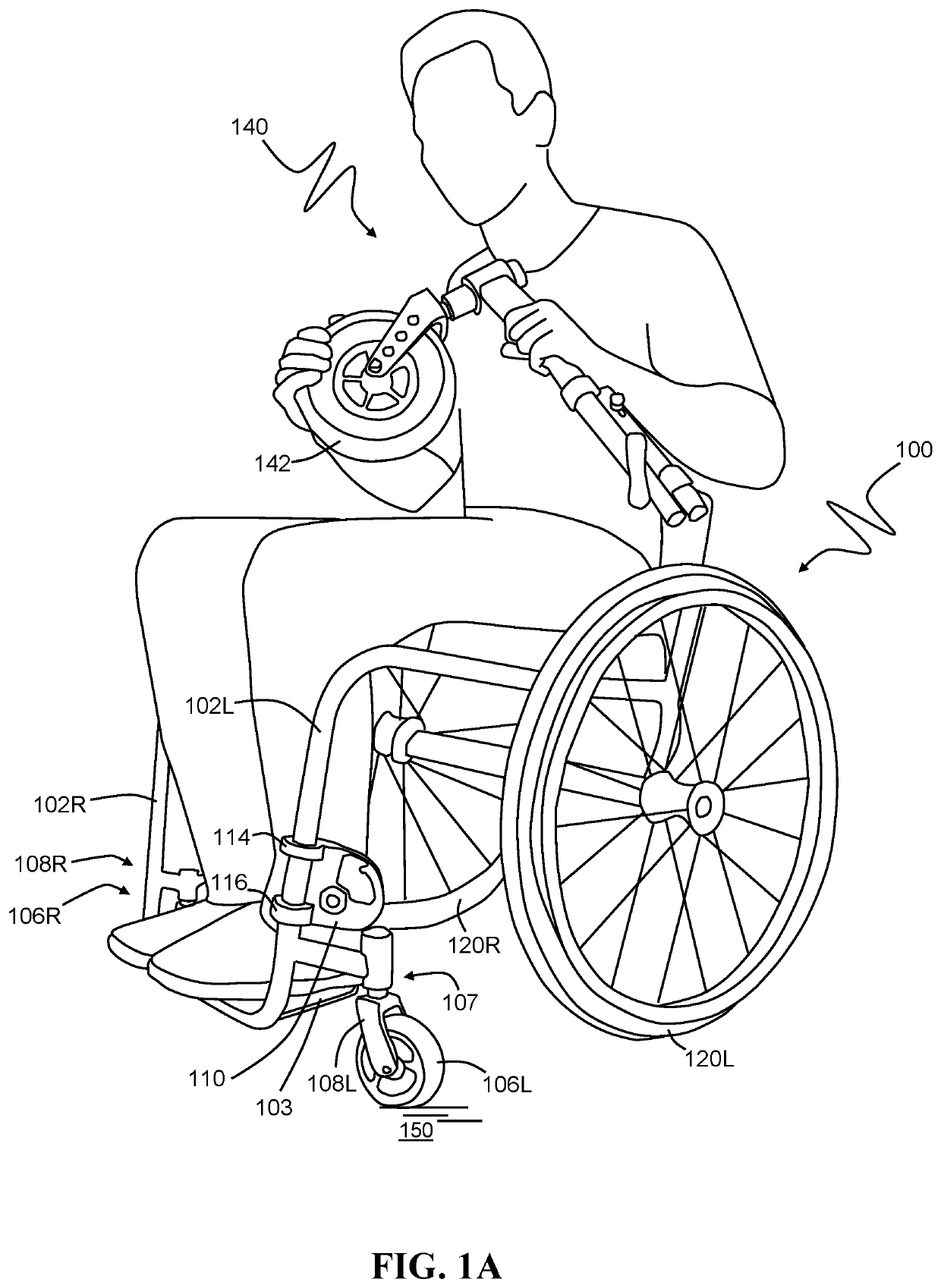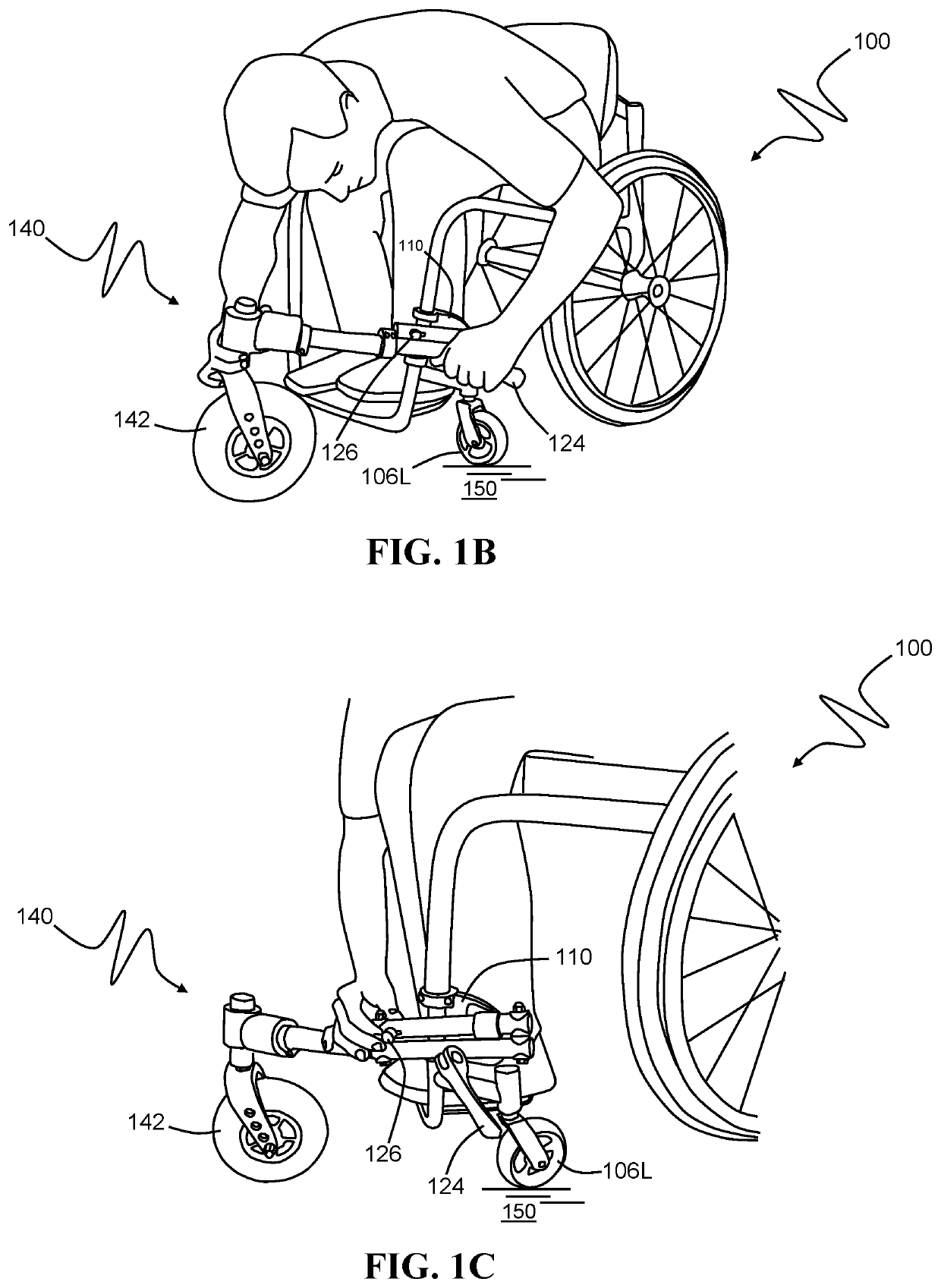Wheelchair reconfiguration methods
a technology of reconfiguration and wheel chair, applied in the field of wheelchairs, to achieve the effect of reducing manual grip strength and sensation, facilitating securing and removing the device, and optimizing performan
- Summary
- Abstract
- Description
- Claims
- Application Information
AI Technical Summary
Benefits of technology
Problems solved by technology
Method used
Image
Examples
example ii
[0169]Dual (left and right) adaptive caster wheel apparatuses, each having a load-transitioning mechanism which separably integrates with a caster wheel implement, were built and configured for the purpose of lengthening the effective wheelbase of the wheelchair and also for decreasing the rolling resistance experienced by the user, especially while traversing over ground substrates such as sand, gravel, woodchips, grass, and snow.
[0170]Both apparatuses were configured to be removably and adjustably affixed to the tubular frame of a Ti-Lite TRA rigid-style ultralight titanium wheelchair by way of mounting clamps which were semi-permanently affixed onto the left and right forward lateral supports of the tubular frame of the wheelchair; each device occupies a space immediately above a primary caster wheel assembly on its respective side of the wheelchair. The load transitioning mechanism of the device remains affixed to the wheelchair at all times and is unobtrusive to the user's arms...
example iii
[0182]An early prototype was devised having an integrated 8-inch caster wheel assembly, load-transitioning mechanism, and releasable clamp assembly, which was built and configured for the purpose of lengthening the effective wheelbase of an “everyday” wheelchair and also for decreasing the rolling resistance experienced by the user, especially while traversing over ground substrates such as sand, gravel, woodchips, grass, and snow.
[0183]The apparatus was configured to be removably and adjustably affixed to the tubular frame of either an Invacare Top End Terminator Titanium wheelchair or a Ti-Lite TRA rigid-style ultralight titanium wheelchair by way of a hinged clamp adapted to be quickly and securely affixed onto the left forward lateral support of the tubular frame of the wheelchair; the device occupies a space immediately above the left-side primary caster wheel assembly of the wheelchair. The load transitioning mechanism, clamp assembly, and caster wheel assembly may thus be rem...
PUM
 Login to View More
Login to View More Abstract
Description
Claims
Application Information
 Login to View More
Login to View More - R&D Engineer
- R&D Manager
- IP Professional
- Industry Leading Data Capabilities
- Powerful AI technology
- Patent DNA Extraction
Browse by: Latest US Patents, China's latest patents, Technical Efficacy Thesaurus, Application Domain, Technology Topic, Popular Technical Reports.
© 2024 PatSnap. All rights reserved.Legal|Privacy policy|Modern Slavery Act Transparency Statement|Sitemap|About US| Contact US: help@patsnap.com










